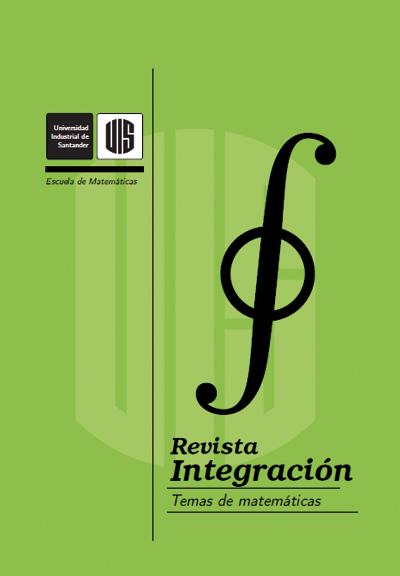Artículos científicos
Comportamiento cualitativo de las soluciones de ecuaciones diferenciales sin la condición signum
Publicado 1999-04-15
Palabras clave
- Amortiguamiento no negativo,
- prolongabilidad al futuro,
- acotamiento,
- ecuaciones diferenciales no lineales
Cómo citar
Martínez Sánchez, F. R., & Ruiz Chaveco, A. I. (1999). Comportamiento cualitativo de las soluciones de ecuaciones diferenciales sin la condición signum. Revista Integración, Temas De matemáticas, 17(1), 11–25. Recuperado a partir de https://revistas.uis.edu.co/index.php/revistaintegracion/article/view/876
Resumen
En este artículo estudiamos el comportamiento de las soluciones de la ecuación de segundo orden no lineal amortiguada x''+\phi(t,x,x') + a(t)g(x)k(x')=0, sin la condición signum: x,g(x)>0, si x es diferente de 0. Establecemos condiciones suficientes para la prolongabilidad al futuro y el acotamiento de sus soluciones, generalizando trabajos anteriores en esta temática.
Descargas
Los datos de descargas todavía no están disponibles.
Referencias
[1] Burton, L.A. (1965): “The generalized Liénard equation”,SIAM J. Control Op-tim.3: 223–230.
[2] Burton, T.A. (1977): “A continuation result for differential equations”,Proc.Amer. Math. Soc.67(2): 272–276.
[3] Burton, T.A.; Grimmer, G. (1971): “On continuability of solutions of secondorder differential equations”,Proc. Amer. Math. Soc.29: 277–283.
[4] Burton, T.A.; Grimmer, R. (1971): “On the asymptotic behaviour of solutionsofx′′+a(t)f(x) = 0”,Proc. Cambridge Philos. Soc.70: 77–88.
[5] Heidel, J.W. (1972): “A Lyapunov function for a generalized Li ́enard equation”,J. Math. Analysis Applic.39: 192–197.
[6] Huang, L. (1994): “On the necessary and sufficient conditions for the bounded-ness of the solutions of the nonlinear oscillating equation”,Nonlinear Analysis,Theory, Methods& Applications23(11): 1467–1475.
[7] Hurewicz, W. (1958):Lectures on Ordinary Differential Equations, The M.I.T.Press, Cambridge, Massachussetts and London.
[8] Martínez–Sánchez, F.R.; Ruiz–Chaveco, A.I. (2001): “Prolongabilidad al futuroy acotamiento de las soluciones de ecuaciones y sistemas de ecuaciones diferenciales de segundo orden”,Revista Ciencias Matemáticas U.H.(por aparecer).
[9] Martínez–Sánchez, F.R.; Ruiz–Chaveco, A.I. (2001): “On continuability of solu-tions of nonlinear differential equation without the signum condition”.ElectronicJournal of Qualitative Theory of Differential Equations(submitted for publication).
[10] Repilado–Ramírez, J.A.; Ruiz–Chaveco, A.I. (1985): “Sobre el comportamiento de las soluciones de la ecuación x′′+g(x)x′+a(t)f(x) = 0 (I)”,Revista Ciencias Matemáticas U.H.VI(1): 65–71.
[2] Burton, T.A. (1977): “A continuation result for differential equations”,Proc.Amer. Math. Soc.67(2): 272–276.
[3] Burton, T.A.; Grimmer, G. (1971): “On continuability of solutions of secondorder differential equations”,Proc. Amer. Math. Soc.29: 277–283.
[4] Burton, T.A.; Grimmer, R. (1971): “On the asymptotic behaviour of solutionsofx′′+a(t)f(x) = 0”,Proc. Cambridge Philos. Soc.70: 77–88.
[5] Heidel, J.W. (1972): “A Lyapunov function for a generalized Li ́enard equation”,J. Math. Analysis Applic.39: 192–197.
[6] Huang, L. (1994): “On the necessary and sufficient conditions for the bounded-ness of the solutions of the nonlinear oscillating equation”,Nonlinear Analysis,Theory, Methods& Applications23(11): 1467–1475.
[7] Hurewicz, W. (1958):Lectures on Ordinary Differential Equations, The M.I.T.Press, Cambridge, Massachussetts and London.
[8] Martínez–Sánchez, F.R.; Ruiz–Chaveco, A.I. (2001): “Prolongabilidad al futuroy acotamiento de las soluciones de ecuaciones y sistemas de ecuaciones diferenciales de segundo orden”,Revista Ciencias Matemáticas U.H.(por aparecer).
[9] Martínez–Sánchez, F.R.; Ruiz–Chaveco, A.I. (2001): “On continuability of solu-tions of nonlinear differential equation without the signum condition”.ElectronicJournal of Qualitative Theory of Differential Equations(submitted for publication).
[10] Repilado–Ramírez, J.A.; Ruiz–Chaveco, A.I. (1985): “Sobre el comportamiento de las soluciones de la ecuación x′′+g(x)x′+a(t)f(x) = 0 (I)”,Revista Ciencias Matemáticas U.H.VI(1): 65–71.
